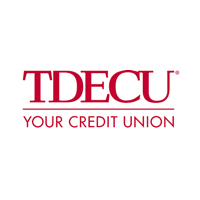Sustainable growth requires addressing multiple barriers to growth, which in turn require multiple management disciplines. We deploy teams with extraordinary breadth and depth of expertise to match the complexity of the challenges they are intended to solve. While we have industry expertise—lots of it—we don’t rely on that alone. We have deep expertise in the different management disciplines required to unlock superior growth. We help our clients build their own capabilities for lasting results.
71%
Senior executives report working with a coach.
63%
Contacted organizations plan to increase their use of coaching over the next five years.
92%
Leaders being coached say they plan to use a coach again.
In a nutshell, the proof that justifies the “reason why” of coaching:
- the benefits of coaching mostly last forever and can be immediate
- the ROI is among highest of any type of investment (usually over 500%)
- the cost of not doing it and working with average employees is significant (see below exact references)
- coaching accelerates penetration of a “winning attitude” in businesses and organizations.
Executive coaching is a fantastically smart tool to gain competitive edge during an economic crisis and at the advent of a new economic cycle.
• In 2001 a research on over 100 executives, mostly from Fortune 1000 companies, found the company experienced on average a 600% Return on Investment (ROI) when they provided their executives with 1-on-1 executive coaching and leadership development.
The executives reported directly saving or making an average of $100,000 for every $15,000 to $20,000 spent on their coaching, in addition to other intangible benefits such as enhanced morale, improved interpersonal relationships, and a stronger leadership team.
• A 2002 study of mid-size companies found an average ROI of over 520% for management and leadership coaching initiatives.
• The Denver Post reports that a Manchester survey of 140 companies shows 9 in 10 executives believe coaching is worth their time and dollars, with an average return of more than $5 for each $1 spent.
• Companies who invest in developing their people consistently outperform companies who do not by an average of 35% every year! (research by the American Society of Training and Development)
• Companies with higher investment in employee development have lower turnover (Carroll Lachnit, Training magazine, September, 2001)
• Top performers produce up to 48% more output than average performers and up to 96% more than below average performers (“The validity and utility of selection methods in personnel psychology“ – Psychological Bulletin, Sept 1998)
• Top performers or “A” players in any function (not just employees in sales generating or billable positions) create from 80% to 130% more value than “C” players (Michaels, Handfield-Jones and Axelrod, 2001)
• Dr. Brian Underhill, an industry-recognized expert in the design and management of worldwide executive coaching implementations, found in a research study from 2008 that:
43% of CEOs and 71% of senior executives report working with a coach
63% of contacted organizations plan to increase their use of coaching over the next five years
92% of leaders being coached say they plan to use a coach again
• The 2006 annual learning and development survey published by the Chartered Institute of Personnel and Development (CIPD) found that: 79% of respondents used some form of coaching activity
• Even The National Aeronautics and Space Administration (NASA) saw the importance of effective Executive Coaching when, in 2004, they announced a five-year plan to implement an agency-wide executive coaching program.
One of the biggest questions executives have is:
“Why should I develop people, many of them will leave the company later on? What good is that to me?”
First, if you invest in people you have more chances they will stay.
And then, a bigger question you should ask is: “What if you don’t develop them and they stay?”
























